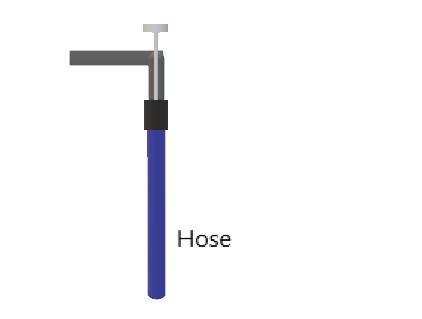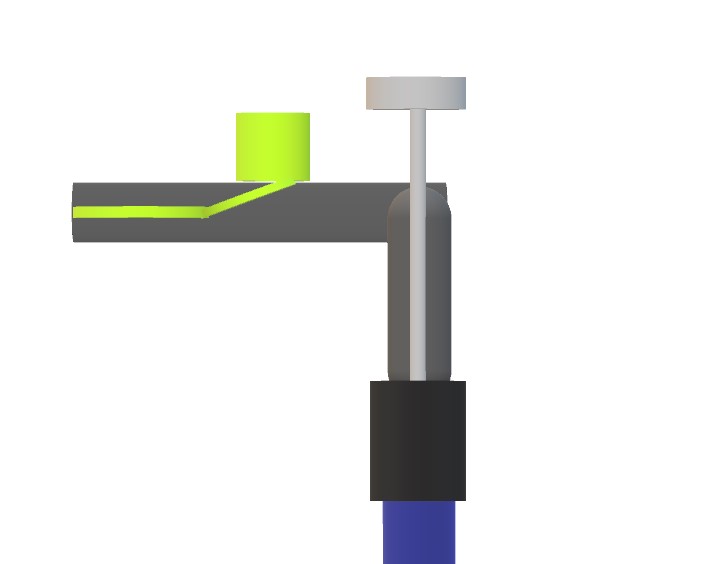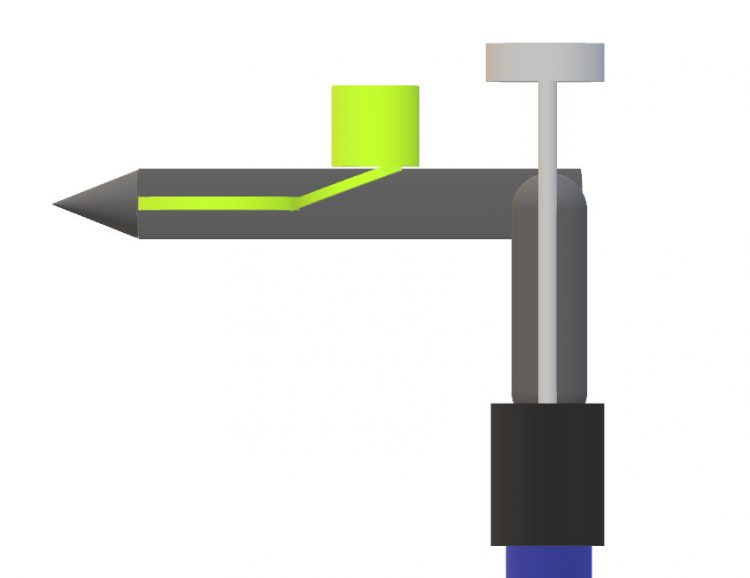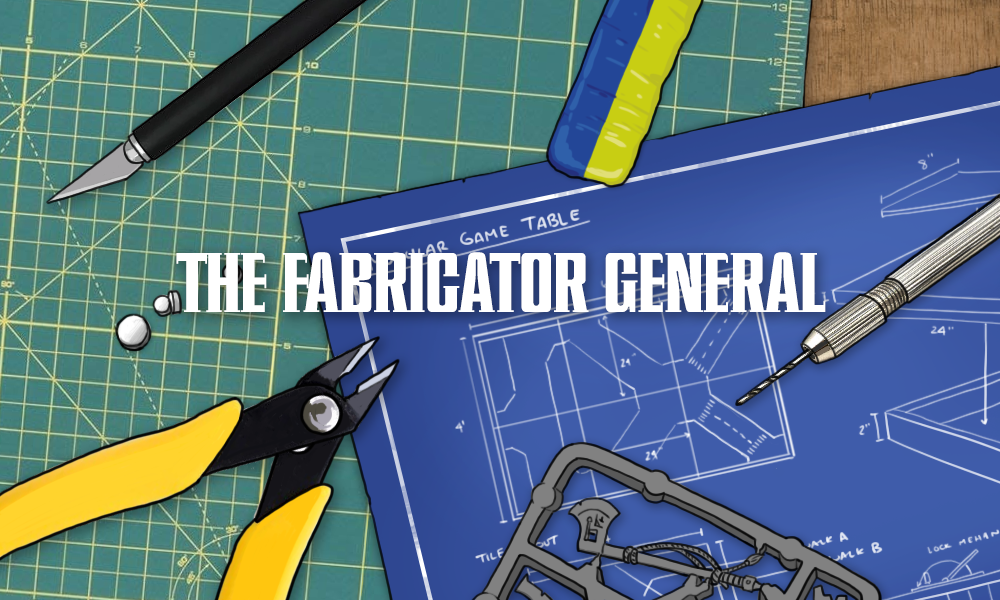An airbrush is like enabling cheat mode, right? You just have to buy one and suddenly your painting is a million times better. Well, not really… As most people who’ve bought an airbrush will know you are going to spend almost as much time fixing issues with it as you are banging out epic fades. Here Silks talks about how to fix some of the common issues
What is an airbrush?
OK, probably a simple question but it really helps to diagnose what’s going wrong with your setup. At its simplest an airbrush is a right angle attachment that goes onto an air hose. Air comes out of the hose at a high speed and the metal airbrush on top is a right angled bit of metal that points the air out of the end of it. Without any sort of trigger or paint all you’re going to get is air flying out of the end of it

The airbrush also has a trigger. Let’s go ahead and ignore the dual action trigger for the moment. When you push down on the trigger you’re allowing the valve connector at the end of the air hose to open, causing air to flow through.

That’s the basics of an airbrush with no paint involved. Now let’s think about how the paint is added. Here there’s some Goblin Green in the cup which flows down into the airbrush body. It will leak out of the end and when you press the trigger there will be a horrible mess, but we’re spraying paint at least!

Here we’ve added a nozzle. This will stop the paint from falling out of the brush, but stop anything being sprayed through. If you try to spray the air will be pushed out of the only place it can go, through the paint channel and up into the cup, causing it to bubble and nothing to come out.

Here we have added the needle as well as some vents to let the air out. If you just push on the trigger the air can flow out of the end of the brush through the vents, but if you retract the needle paint will be added and will combine with the air that’s flowing out. The more you retract the needle the more paint can flow into the air stream. The needle is retracted by pulling back the trigger, through which the needle is pushed (although you could do it by hand if you took the back of the airbrush off and grabbed it.
Thinning your paint
You don’t need to buy fancy airbrush paint, you could spray chicken soup / human blood / peanut butter if you thin it down enough*
*Goonhammer does not condone spraying with human blood, no matter how metal it is
Even airbrush paint quite often needs thinning. “But Silks, what’s the ratio of paint to thinner?!” I hear you frantically cry. Well, there really isn’t one. The only answer is “until it’s right” sadly. This is a trial and error approach and when you’re starting off will probably be more error than trial, but eventually you’ll find what works for you.
Pressure
The other side of the equation to thinned paint is the pressure that you spray at. If you think about the very small holes you’re trying to force the paint through, the thicker it is, the harder you need to push. You can get away with thinning your paint down less if you increase the pressure, however the more pressure you use the less control you’re going to have on it and the more paint is going to get sprayed.
Common issues
Bubbling in the pot
As we can see above, the air needs to get out of the end of the airbrush otherwise it will go back up into the pot. If this is happening the likelyhood is that the seals on your brush aren’t properly closing or the air channels are blocked. Cleaning around the screw of the nozzle and in the air gaps around the needle should resolve this.
No paint coming out
There’s something that is stopping the paint from reaching the opening. The likelyhood is that it’s in the nozzle but it could be further back in the paint channel. A good clean and a poke with an old needle should resolve this.
Sputtering / Spitting
Air is the only thing that should be coming from your compressor, but it’s only as clean as the air in your room. Eventually moisture will build up in the tank and start to be passed through the brush. Make sure you have a moisture trap on your compressor and empty it regularly.
Spiderwebbing
This is caused when you’re spraying thin paint and the air is blowing it around before it can dry. Reduce your pressure and rock the trigger back and forth in a pulse rather than just pulling it all the way back and letting rip.
Dusting
If you’re getting specks of paint rather than a nice clean coverage this could mean your paint is too thick and or you need more pressure. The other reason this could be is paint drying on the tip of the needle. This seems to happen especially when you are using light colours. Use an old toothbrush / cleaning brush to wipe your needle tip and try again. This can sometimes need to be done constantly depending on the paint.
Loss of accuracy
Rather than a symptom of old age, this is more likely to be down to your needle being bent. The needle needs to be razor sharp and absolutely straight to work properly. Sadly, the only real way round this is to replace it. I tend to keep a spare needle for both my brushes as you will always bend it at the worst possible time!
Stripping down your brush
Sadly, a lot of the common issues can only be resolved by giving your brush a good clean. I would strongly advise that you know how to take every part of your airbrush apart and then put it back together again before you fill it with paint. You *will* clog it (I still do after 5 years of using it) and figuring out how it comes apart when it is clean is a lot easier than when it’s full of paint!
Cleaning
You don’t need to strip your brush every time you change paint. Mostly I use some clean water and an old paint brush to clean out the cup and then spray water through until it’s clear. At the end of a session (or when I’ve clogged it) that’s then I strip it down and properly clean it. Firstly I run all the pieces under a tap (making sure not to drop any tiny bits down the drain). Any stubborn paint is scrubbed with a cleaning brush. I use an old airbrush needle that I’ve bent to clean out the nozzle (be careful though, this is a very thin piece of metal and if you push something too thick like a tooth pick through the end you’re likely to tear it and have to replace it. Once I’m happy everything is clean I reassemble it all and spray some airbrush cleaner through it.
It’s still clogged!
I try to avoid this unless it’s a last resort but if your brush still isn’t working you can try “Liquid Reamer” (Amazon stocks it). This stuff comes in a spray can and with a lot of health warnings as it is incredibly toxic, but it will absolutely destroy paint. Disassemble your brush and spray each piece with some then after 10 minutes give it a really good clean with a toothbrush. Please, please use gloves and a mask if you’re doing this as it is toxic as hell, but I have yet to find a problem it can’t fix!

Do you have any airbrush issues that this doesn’t cover? Comment below and we’ll see if we can work out what’s going on!


